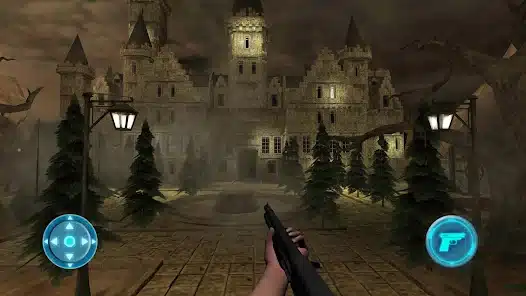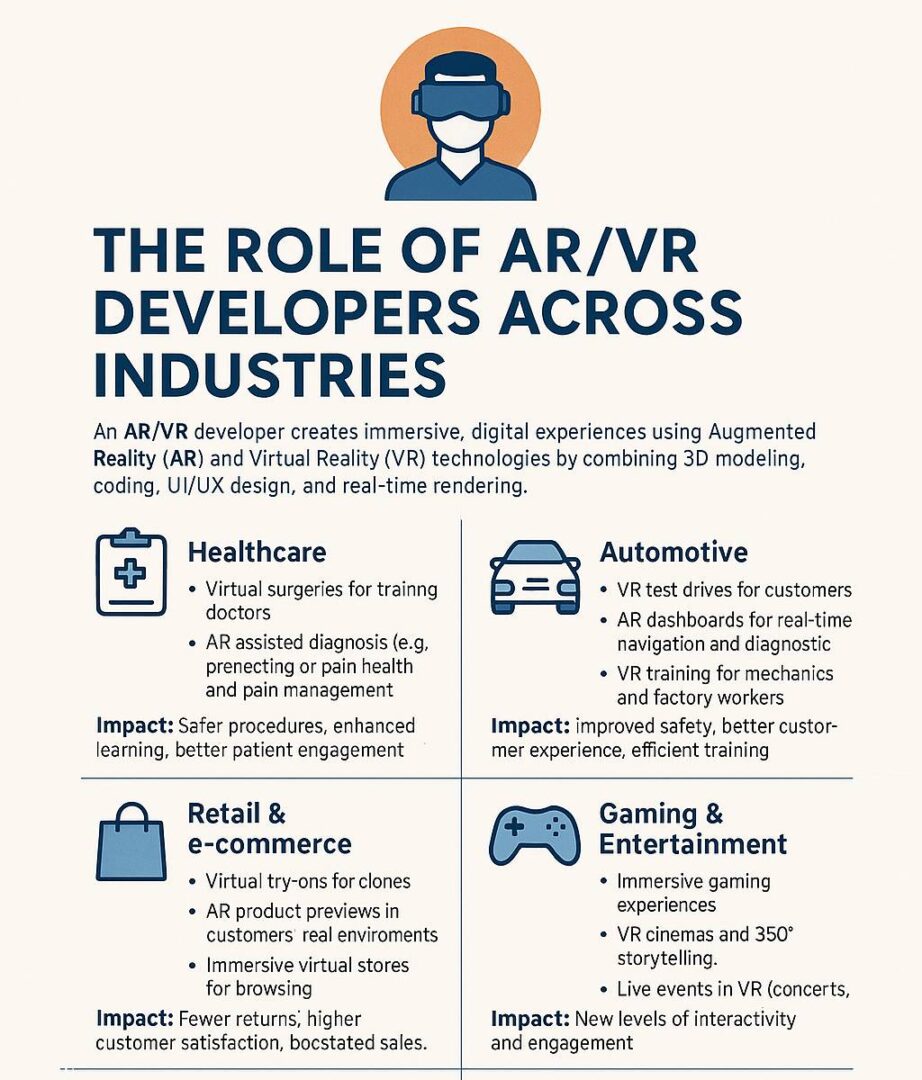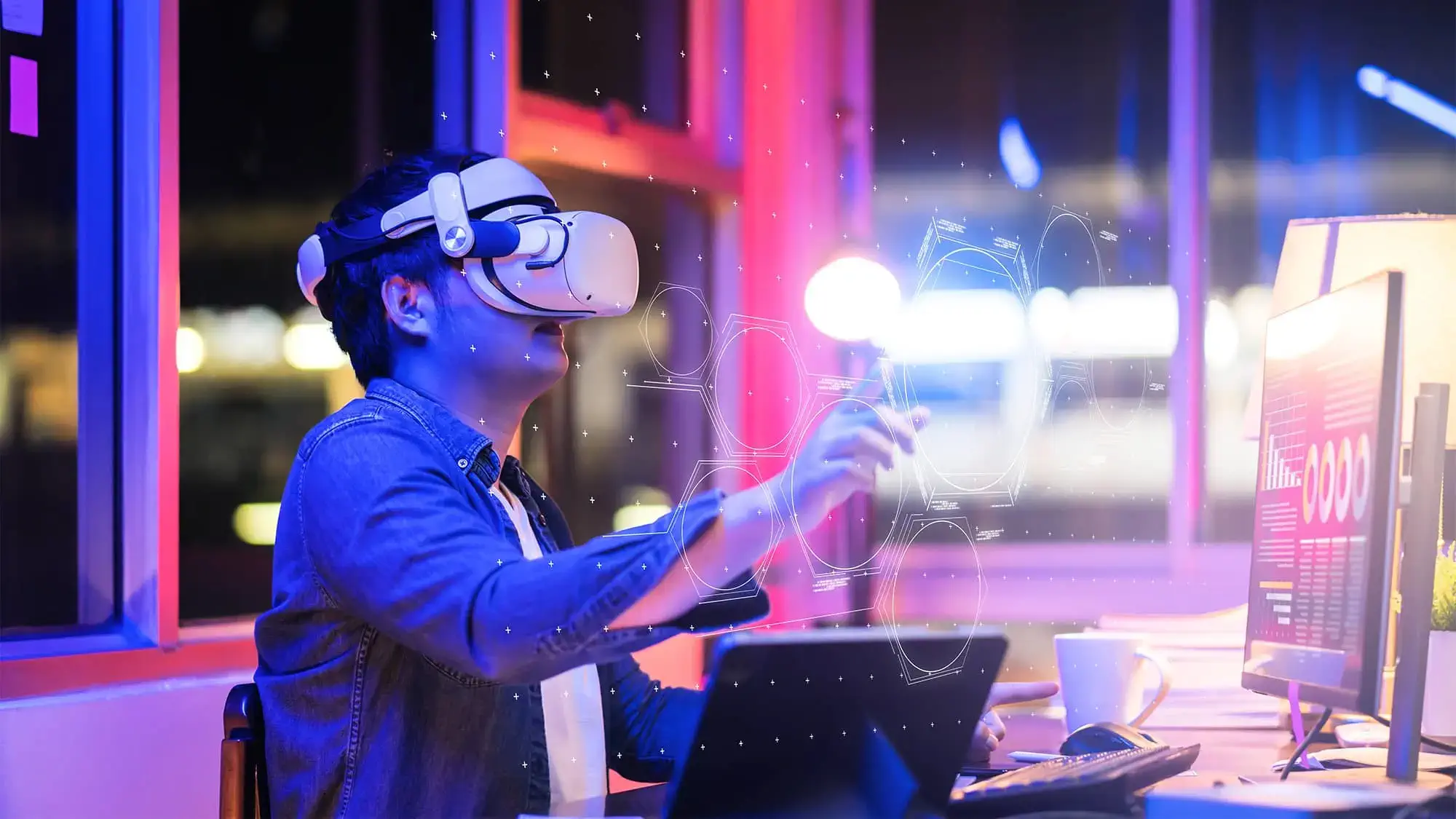The global AR/VR market shows an expected growth to surpass $250 billion during 2028.
The increasing demand for immersive technology has caused developers to rewrite their methods globally as shown by data from Statista.
Each mesmerizing virtual rollercoaster and AR-powered IKEA app and futuristic metaverse avatar emerges from coders who develop these wonders into reality.
An exploration into the professional activities of AR/VR developers who build parallel virtual worlds. These developers represent the closest living entities to our parallel universe creation.
The Role of an AR/VR Developer
Developers who create virtual realities work at the core of immersive experiences since they establish complete virtual universes.
Between art and science and psychology and magic stands the work of an AR/VR developer. These developers function like contemporary wizards through their logical approach to programming.
1. Creating Immersive Worlds

VR developers construct whole virtual environments and provide users access through devices such as Oculus and HTC Vive and PlayStation VR. The architects of virtual space transpose designs by adopting polygons and pixels instead of traditional building materials.
AR developers, on the other hand, overlay digital elements onto the real world. This development method enables users to add digital elements like live characters who perform various animated tasks ranging from dance routines to conversational sequences or dragon battles.
Development teams create digital interfaces that blend physical realities with digital aspects inside shopping malls through methods such as holographic assistants and augmented reality mirrors.
The programming environment includes Unity or Unreal Engine which both types of developers use.
Model 3D environments and characters
Design intuitive user interactions
Program object behaviors
Companies should maximize application performance for different hardware devices and platforms.
Game or app development is only one part of their responsibilities. Computer programmers develop experimental content which stimulates all your sensory perceptions starting from sight and moving to sound and touch and even evolving into smell technology (which actually exists).
2. Programming Languages & Tools
The magic effects which appear like sci-fi magic run beneath advanced technical programming principles.
The usual tools and languages for development include:
The core languages for writing interaction scripts are C# and C++ together with other programming capabilities.
Unity – one of the most popular game engines for building cross-platform AR/VR apps.
The Unreal Engine stands out due to its cutting-edge performance of realistic visual effects combined with stark graphics quality.
The software suite Blender, Maya along with 3ds Max serves to design three-dimensional models and environments and characters.
ARKit (iOS) and ARCore (Android) – for mobile AR app development.
AR/VR developers must maintain several roles throughout their work since they need to write code, design interfaces, test the product and undertake user research responsibilities.
The role of a developer in this field includes being a professional who understands both the act of cooking and how to structure plating while administrating ingredients and constructing cooking devices and providing food service.
3. Real-Time Problem Solving
The development of a digital haunted house video game requires users to walk through virtual spaces.

All phantasmagoric moments as well as amorphous noises and unexpected scare effects need a believable interpretation despite being non-physical manifestations. The true challenge emerges with developing programs in real-time.
Developers constantly troubleshoot:
The delay in VR system performance results in feelings of nausea along with dizziness in virtual environments. The development process requires developers to achieve flawless frame rates.
A virtual element that raises above its corresponding physical object through spatial mapping bugs destroys the illusion of virtual reality immersion.
Virtual hand phantom objects freely penetrate physical barriers while your virtual sword disappears during movements.
Developers must put in many hours along with multiple days to identify and fix the one bug which shatters the virtual reality experience. The developers focus on crafting an environment that makes users forget about their virtual or screen-mediated experiences.
The technology works in a manner similar to professional magic performances. The illusion may be unreal to you but an expert presentation can create realistic sensations.
4. Collaboration with Multidisciplinary Teams
Developers who create AR/VR solutions must work independently from no one.
They work closely with:
Designers with experience in creating interface systems that both users and systems can manage easily
The creation of characters and environments lies with 3D artists while they work within the team.
The animation work of developers animates scenes by adding screen movement.
Sound engineers incorporate audio effects for creating realistic depths in virtual creations.
Business goal alignment becomes the responsibility of product managers in the system.
As the movie set director and editor at the same time the developer ensures a smooth combination of all components.
The designers conduct research with psychologists to determine how headset users react to virtual space and movement since virtual reality affects user perceptions unless it is properly designed.
Use Case Spotlight: TwinReality
The company TwinReality operates at the forefront of advancing both AR/VR technology.
The next-generation immersive company TwinReality enables businesses to utilize VR and AR technologies for training operations along with simulation development and marketing purposes and product visualization applications.
Developers at this company use their skills to generate experiences which promote industrial progress. For example:
The company developed virtual training scenarios that prepare staff members to tackle emergencies safely in simulated environments.
Virtual walkthroughs of buildings and interiors for architects and real estate professionals.
Virtual shopping encounters enable customers to virtually test out clothing items as well as furniture pieces and makeup products.
With TwinReality as an example we observe how the visual computing market through AR/VR technology is redesigning businesses by delivering immersive industrial transformations.
Why It Matters
The future exists in our present environment rather than in screen projections.
AR/VR developers create educational tools as well as training solutions to transform both educational and professional activities together with social interactions.
In industries like:
Healthcare institutions utilize VR as a tool for surgical education practices.
Through AR educational materials become more dynamic after static textbook diagrams.
Customers at retail locations get the ability to preview items through visual representations of products in their domestic spaces.

Companies within the automotive sector conduct their vehicle design assessments through virtual environments.
Their role is becoming indispensable. Affordable headsets together with hardware accessibility have caused the demand for trained AR/VR developers to surge rapidly.
AR/VR developers guide the progress toward immersive experiences in parallel to how mobile app developers advanced smartphone technology.
Final Thoughts
People who develop AR/VR systems do not belong to the traditional programming profession.
These professionals embody combined abilities of storytelling with engineering skills alongside design abilities and illusion-making capabilities.
The codebase of 1s and 0s transforms into simulations resembling reality while also creating alternative worlds and immersive virtual perceptions.
Users can experience fruit slicing in virtual reality and sofa preview through augmented reality applications because developers utilize extensive programming and testing alongside many cups of coffee.
Your interest in this world means you should make your move now without delay. Begin learning Unity and acquire C# programming skills before testing your own experiments. Check out the innovations at TwinReality to witness imagination combine with innovation.
The future isn’t coming. It’s already here—and it’s virtual.


